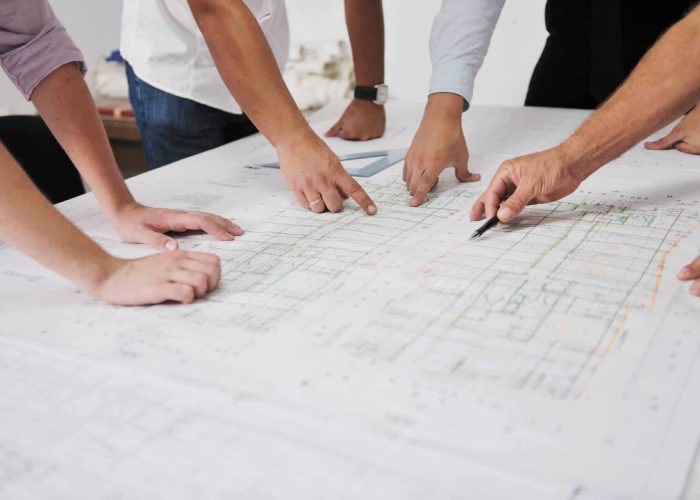Article Takeaways: What City Leaders Should Know
- Plan for growth. Assess your water, wastewater, and energy systems now to prepare for population increases or any other economic factors that will affect your overall infrastructure.
- Cut costs through efficiency. Upgrade aging facilities with LED lighting, HVAC improvements, and water-saving systems to lower operating expenses.
- Reduce water loss. Modern smart water metering and leak detection systems help small-town utilities recover lost revenue and improve system reliability.
- Invest in community-focused improvements. Prioritize projects that enhance daily life by making it safer and more efficient for residents.
- Explore budget-neutral financing. Energy savings performance contracts and federal programs can fund projects with little to no upfront cost. Much-needed building improvements can pay for themselves.
- Work with a single, accountable partner. A design-build approach streamlines planning, construction, and long-term performance. Get in contact with a Performance Services expert today!
Municipal Growth Is Reshaping Local Infrastructure Needs
Across the United States, cities and towns of all sizes are growing. Urban populations are expanding, putting pressure on local infrastructure, including water systems, public buildings, staffing requirements, and utilities. For many municipalities, this growth presents both a challenge and an opportunity: how to modernize essential systems, improve community services, and prepare for the future without straining local budgets.
At Performance Services, we help communities address these challenges through cost-saving infrastructure projects for municipalities, designed to enhance efficiency, minimize waste, and generate long-term community benefits.
Meeting Community Growth with Purpose
Whether your community is expanding rapidly or simply trying to maintain aging infrastructure, urban planning and municipal improvements play a crucial role in supporting residents and local economies. The key is identifying where upgrades will make the biggest difference for public services and community quality of life.
Common priorities for local governments include:
- City upgrades to help existing facilities and utilities run more efficiently
- Community infrastructure upgrades to improve daily life for residents
- City and town projects to reduce operating costs and environmental impact
- Infrastructure for growth that ensures water, energy, and public services keep pace with population increases
- Enhancing safety measures for community residents
- Creating spaces and buildings for their staff that are safe, accessible, and functional for the use of the building
These goals aren’t about modernizing technology; they’re about practical improvements that make cities and towns more resilient, efficient, and financially stable.
Addressing Core Community Needs
Every community faces unique challenges, but a few areas consistently rise to the top for local leaders seeking improvement:
1. Water and Wastewater Systems
Aging water systems are one of the most pressing infrastructure issues facing cities today. Across the U.S., roughly one in every five gallons of treated drinking water is lost or unbilled due to leaks, broken meters, or inefficiencies (Bluefield Research Report, 2025).
Performance Services helps municipalities reduce water loss in small-town water systems by upgrading to accurate metering, modern leak detection, and efficient treatment systems. Our experts design water and wastewater systems to increase reliability and save your city utility money. We begin with an assessment at no cost, taking on the risk so that you can rest assured that there will be no obligation if your systems are all functioning without losses. Learn more about water management for cities and towns and how you can save today.
2. Energy and Facility Efficiency
City-owned buildings, including courthouses, schools, and community centers, consume a substantial amount of energy. Through energy-efficient upgrades, such as installing LED lighting, improving HVAC systems, and enhancing building envelopes, municipalities can significantly reduce operating costs while improving comfort and reliability in public spaces.
Recognized for outstanding energy performance as a Top Trade Ally Energy Savings Award recipient, Performance Services helped clients save over 1 million kWh of electricity and 60,000 Therms in 2024. This demonstrates how minor energy upgrades can yield substantial benefits.
3. Infrastructure for Growth
As populations grow, cities can prepare utilities for population growth by improving water, wastewater, and energy infrastructure before capacity becomes a problem. Proactive planning prevents costly emergency repairs and ensures that residents continue to receive dependable service.
Deferring necessary maintenance can lead to increased costs later. Stay ahead of problems before they turn into emergencies.
4. Public Safety and Community Well-Being
Upgrading local infrastructure isn’t just about utilities; it’s about people. From better street lighting to safer roads and more reliable facilities, municipal improvements directly impact the safety, health, and satisfaction of citizens—the need for fire and law enforcement protection changes as your community changes. Being able to attract and retain the staff you need to be a thriving community is something your buildings should support. Performance Services updates your facilities to ensure a productive, comfortable environment for staff who rely on the building.
Discover how upgraded streetlighting can enhance community safety and security. Learn more about smart streetlights here and how they can benefit your city.
Financing City Infrastructure Without Upfront Cost
One of the biggest concerns for local governments is how to pay for city improvement projects. The good news is that budget-neutral financing options can make progress possible without raising taxes or cutting services.
With energy savings performance contracts, for example, cities can fund infrastructure projects through the energy and operational savings they generate. That means improvements can begin immediately, with guaranteed savings that cover repayment. Federal aid programs such as the American Rescue Plan Act (ARPA) and the Infrastructure Investment and Jobs Act (IIJA) may also offer additional funding opportunities.
The City of Hitchcock, Texas, embraced this opportunity, and it’s still delivering. With no upfront capital required, the city upgraded its water meters with Advanced Metering Infrastructure (AMI) and improved the efficiency of its wastewater treatment plant. These water solution upgrades now save the city $1.1 million annually, reducing operating costs and returning funds to the community.
How City Leaders Can Get Started on Infrastructure Projects
Upgrading infrastructure doesn’t have to be overwhelming. The first step is to understand your community’s current condition and identify where improvements will have the greatest impact. From there, our team collaborates with city leaders to develop a plan tailored to your goals, budget, and timeline.
Next Steps:
- Assess current systems with a no-obligation facilities assessment.
- Collaborate with experts to identify high-impact opportunities for savings or efficiency.
- Evaluate funding options and available grants.
- Partner with a single, accountable team to streamline your improvements.
Start Planning Your Community’s Next Improvement Project
Whether your town is facing aging facilities, outdated systems, deferred maintenance, or growing population needs, Performance Services can help you find practical, cost-effective solutions.
Let’s build a stronger community together.





